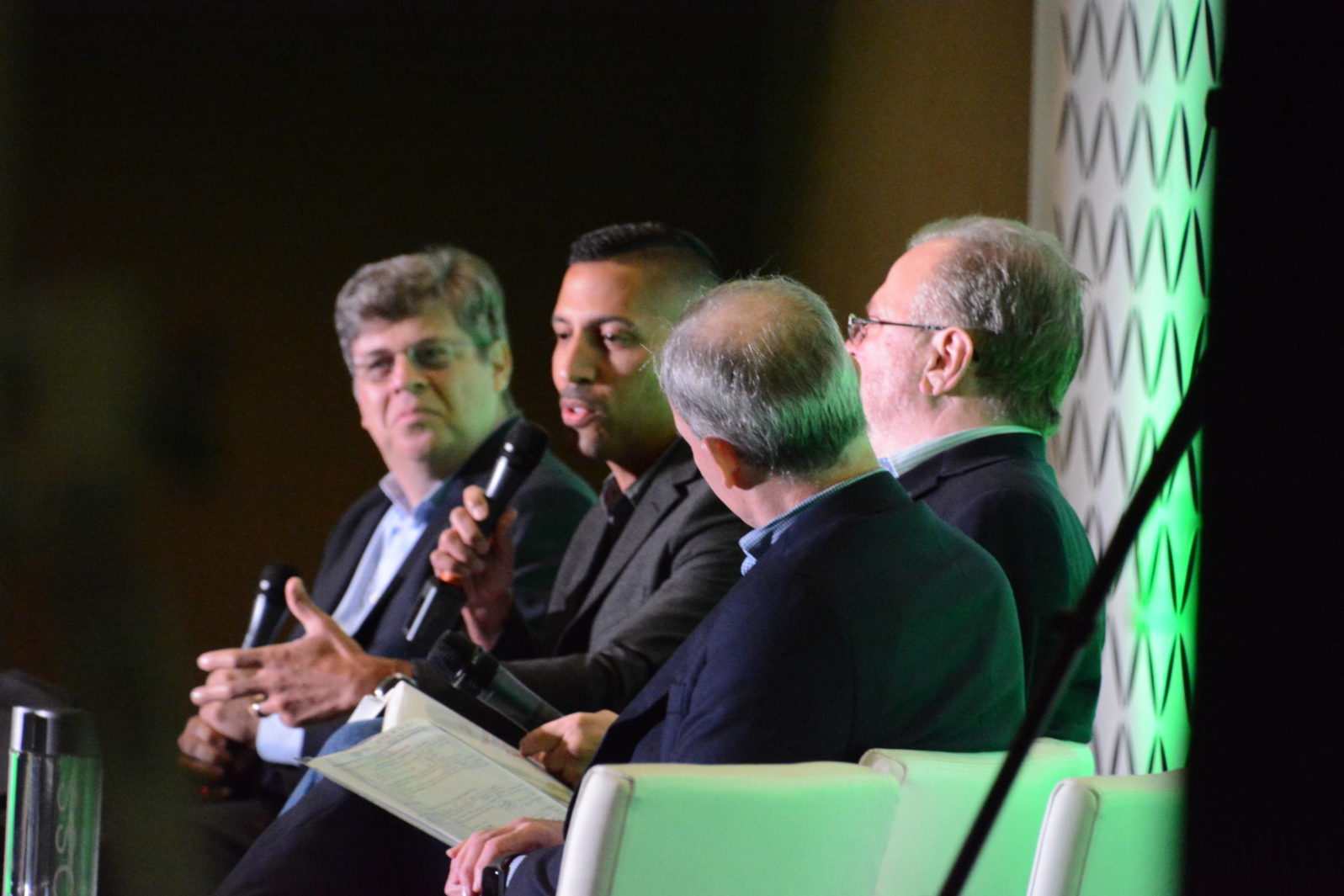Nearer, says futurist Ray Kurzweil, maybe 2045:
In the 2030s, he explained, we will connect the top layer of our neocortex to the last layer of the cloud (as in cloud computing) to connect our biological intelligence to non-biological intelligence. “Our intelligence will then be a combination of our biological and non-biological intelligence.” The Singularity. We will become apps of our smart computers …
In response, conference host George Gilder asked: “How far are we from collecting everything that is in your brain?”
Kurzweil explained, “To do that, we need to go inside your brain. When we get to the 2030s, we will be able to do that. So a lot of our thinking will be inside the cloud. In another ten years, our non-biological thinking will be much better than our biological thinking.” In 2017, he predicted 2045 for a total merger between man and machine.
“Tech pioneer Ray Kurzweil: we will merge with computers by 2045” at Mind Matters News

George Montañez discusses artificial intelligence at COSM.
Others, at the recent COSM conference, were not so sure:
A panel discussion, “AI’s Role in Unlocking Human Potential,” followed tech pioneer and prophet Ray Kurzweil’s remarks at the COSM Technology Summit. The panelists raised a number of doubts about the Singularity and the transformations Kurzweil envisioned. Oren Etzioni, CEO of the Allen Institute for Artificial Intelligence (brainchild of Paul G. Allen, Microsoft co-founder), cautioned against hype about superhuman AI: “Exponentials are very important. If we extrapolate exponentials, we can be exponentially wrong.” He made a distinction, for example, between retrieval of data and understanding it: “To take one tidbit from his talk, he talked about the ability of computers to read 100 million sentences. But they actually only retrieve words.”
Etzioni also reflected on the strictly limited focus of artificial intelligence achievements. “It taught itself to play chess in four hours? But that was in 2018. It was structured to play chess. What has it done for us lately?” …
As Robert J. Marks put it, Non-algorithmic things (things that cannot be calculated), “cannot be uploaded.” Human consciousness, little as we understand it, appears to be one of those non-algorithmic things.
“Is Ray Kurzweil’s singularity now nearer — or impossible?” at Mind Matters News
See also: Post-modern science: The illusion of consciousness sees through itself
Follow UD News at Twitter!